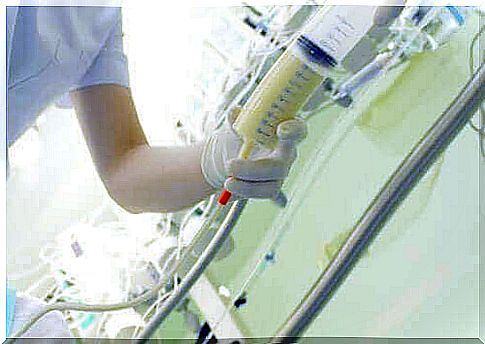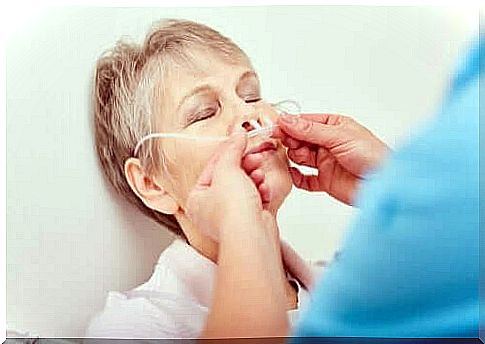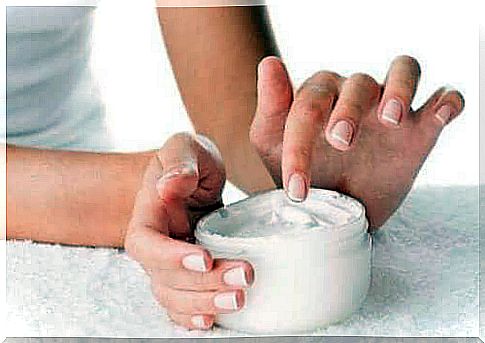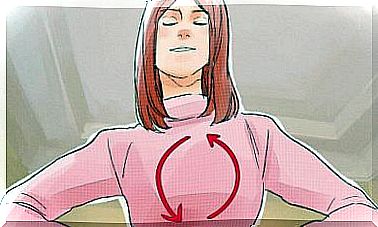What Is A Nasogastric Probe And What Is It Used For?

Nasogastric nutrition consists of attaching a nasogastric tube through a person’s nose and down through the esophagus until it reaches the stomach. These devices are usually made of plastic or silicone and are quite useful when it comes to feeding people who cannot chew or swallow food on their own.
In today’s article, we want to explain some of the most important uses of this probe as well as the necessary maintenance and possible complications.
What is a nasogastric probe used for?
As we mentioned above, the probe is a way to feed a person who is unable to eat on his own. It carries food directly into the stomach. However, it does not help them digest food, but mainly facilitates the journey until it reaches this organ.
Probes are often used in patients with metabolic and gastrointestinal disorders. Similarly, doctors use them in people with certain mental disorders, such as eating disorders. They are also useful in severe cases of malnutrition or prematurity.
A nasogastric tube can also empty the stomach contents. Medical professionals do this when an obstruction occurs in the digestive tract. They can also use it in situations of poisoning or to empty a person’s stomach before anesthesia. Nurses can also administer medication through it.
Usually , however, only a trained doctor or nurse can perform such procedures. However, those who have to do it on their own have to have proper training as well as be able to maintain the device.

How do you use a nasogastric tube?
Many patients need a nasogastric tube at home, so they have to know how to handle it themselves.
For example, they need to know how to keep the outer part clean. To do this, they need a gauze pad moistened with warm water and soap. Then they have to clean the pipe and dry it so it is ready.
People usually add some water after each meal or medication, about 5 to 10 ml. Similarly , they must check that the probe is in the correct position. To do this, they only need to look at the marks on the probe.
Tight probes should be replaced. Although it is usually a family member with the right training who will do so , it is always best to consult a doctor or nurse. The coupling must also be disconnected when the patient is not being fed.
Other tips
Those who use a nasogastric tube must pay close attention to the nose and mouth. It is best to move the tube slightly from time to time and change the contact the probe has with these body parts to prevent irritation. If you are unable to do this every day, it should be done at least once a day when it is dirty or when the surgical tape is no longer on.
In addition, the person responsible for maintenance must clean the patient’s nostrils every day with damp cotton swabs. In the same way , they have to continue with proper oral hygiene habits. This is because you still have to brush your teeth and tongue at least twice a day even if you do not chew.
In the same way, they must apply moisturizer in the nose and on the lips, as the facial skin is quite sensitive. The nasogastric tube often causes irritation and moisturizer can reduce it.

What are the most common complications?
Although this is a very useful tool, some complications can occur. For example, it can lead to damage to the nose. So as we mentioned above you should change the position of the probe as often as you can. You also need to disinfect and wash the area thoroughly.
When a blockage occurs, try resolving it by passing hot water through the probe. However, you must notify your doctor if you are unable to remove the blockage yourself. In most cases, you can prevent blockages by pouring some water through the probe after each feeding.
Another common complication is that the probe falls out. This can be either accidental or not – some patients simply find the probe quite annoying. Whatever the cause may be , you will still need to have it replaced by a professional.
Nausea and vomiting are common side effects, especially when a patient is not well positioned. Try to place them in a 45 ° position to prevent this. This is mainly to prevent the food from coming too fast.
Conclusion
To summarize, the nasogastric tube is a widely used tool, but you must follow your doctor’s instructions. Remember that it is very important to know how to use and maintain it. You should therefore consult a specialist if you have questions or experience complications.









